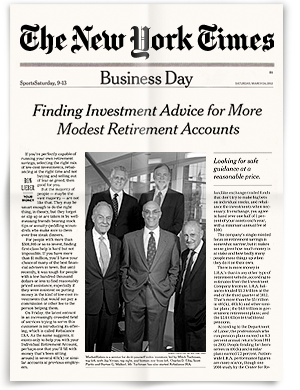How Retirement Planning for Childless Couples is Different

Rebalance VP of Client Services Sally Brandon spoke to USA Today on why it’s important to save for the future even if children are not part of the equation.
The number of Americans without kids has been increasing steadily for decades, with the percentage of women ages 15 to 44 who are childless nearing 50% as of the last Census report. At first glance, childlessness may seem to be the trend that bodes the best for financial stability, especially for couples — a family structure known as “DINKs” for double income, no kids.
This logic is based on the simple fact that kids are expensive. A child costs over $245,000 to raise until age 17, according to the U.S. Department of Agriculture, a sum of money the childless, in theory, could use to fund retirement.
But while Gregory Hammer of Hammer Financial Group acknowledged being childless can make a time horizon for retirement more predictable, he was quick to add that people without kids often have other things that are costly in their day-to-day lives — more travel, for instance — while other retirement planning differences are negligible.
One difference he did emphasize is that childless couples must be sure to prepare for the death of a spouse, since they don’t have children to rely upon.
“When the first spouse passes away, income usually goes down, more times than not tax liabilities increase, and expenses either stay the same or increase,” he explained. Childless couples especially should crunch the numbers on such a scenario to see what gaps in income would exist. From there, either be prepared to return to work, or take out a life insurance policy to cover the difference.
Along the same lines, long-term care insurance is a smart bet for childless couples. Policies aren’t cheap, costing $2,000 to $4,000 annually for a couple in their mid-50s. Buying coverage earlier rather than later means lower premiums, though. And while it may be hard to imagine eventually being frail or dependent enough to need it, it’s smart to have the policy in place for a worst-case scenario.
Really, though, this kind of planning should take place even when children are in the picture, especially if parents don’t want to burden their kids down the line. As Sally Brandon of Rebalance put it: “Everybody needs to plan for themselves and care for themselves whether they have children or not. Who knows if your kids will have the wherewithal to take care of you anyway?”
Unfortunately, one similarity between DINKs and their DEWK (double earners with kids) counterparts is that such planning is often neglected. “A lot of people have this sense that it’s all going to work out (but) have never gone through the exercise of really understanding what the numbers look like,” she added.
So for DINKs and DEWKs alike, the importance of foresight can’t be understated. Take the time, crunch the numbers and put plans in place for everything from retirement income to long-term care. As Brandon summed it up: “Being aware, as with anything, is half the battle.”
Basic Retirement Math
Here are five simple steps to get started:
- Determine what fixed income you and your spouse will have in retirement, including Social Security, annuities, pensions, etc.
- Estimate your annual expenses in retirement.
- Calculate the difference to learn how much you and your spouse need your savings to generate each year.
- Consider what assets you want to leave behind. Even if you don’t have children, there may be other people or charities you want to support. Do your current income needs take these goals into account?
- Finally, although it might feel uncomfortable, run through this exercise again, but with the theoretical passing of one spouse.






